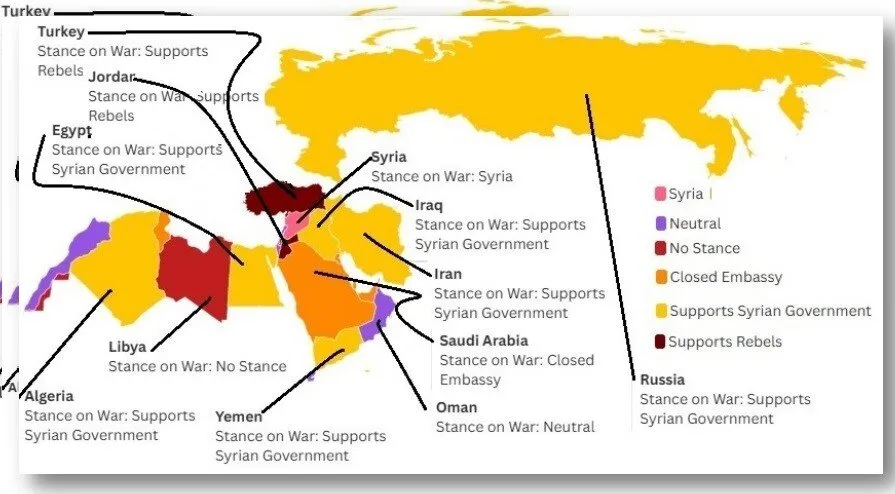 Tsegaye Tegenu, Ph.D.
Tsegaye Tegenu, Ph.D.
Senior Lecturer, Department of Social and Economic Geography, Uppsala University
Researcher, Department of Human Geography, Stockholm University
Researcher, Institute for Futures Studies, Stockholm
Evaluation Specialist, Performance Monitoring and Evaluation Consulting Firm (PMECF)
July 31, 2021
Points of departure
Ethiopian economy has been at the same level of growth and productivity for the last four decades. Economic growth, transformation and development could not keep up with the speed and pressure of population growth. Population of the country has grown fast in these decades making Ethiopia the second-most populous country in Sub-Saharan Africa with a population over 100 million. Currently the Ethiopian population is increasing by about two million people a year.
Past and current economic policies could not provide mechanism for the country to take advantage of its human and natural resource endowments. It is not fair to transfer the blame of poor performance on policy implementation alone. Large amount of energy and resources are spent on policy formulation and implementation with little or no thought given to the subject of strategies formulations. As I see it the growth and development problems of Ethiopia is related to lack of strategies and challenges of policy choices and design appropriate for fast population growth.
Difference between strategy and policy
Strategy
- Components, levels, or hierarchies of strategy includes:
- A) vision (what the country aspires to achieve, making Ethiopia a middle-income country),
- b) mission (motivation and purposes of the vision or who do we do it for, i.e., job creation, increase GDP per capita, local, urban and regional development), they are right indicators that measure progress/achievements
- c) strategic goals (how to progress, sequencing, i.e., private sector development, economic and spatial transformations), and
- d) approaches and specific actions (sub strategies, risk and success factors)
- A strategy fills the gap between “where we are” and “where we want to be”, that is, “how are we going to get there?”
- Strategies reflect intra- and inter-policy objectives. They are designed in a way to have butterfly effects among sectoral policies.
Policy
- Policy making refers to a set of rules for decision making aspect, a policy is the principles or the protocols to guide decisions (often in recurring situations).
- For instance, agricultural policy must focus on smallholders’ farmers. But can smallholders the capacity to adopt technology?
- Another example is on the choice of industrial sectors and products. Industrial policy must focus on consumer goods and not on fertilizer, iron and steel industries; or export-led growth versus import substitution industrialization
- Policy defines the limits (do’s and don’ts) within which decisions must be made. They are widely communicated and available and accessible to all staff.
Significance of strategy
- For instance, sectoral policies aim at providing comprehensive, integrated and balanced frameworks for the quantitative estimates of future demand and the probable total available supply of resources to meet the sector’s objectives. However, job creation, structural transformation and regional development is not their concern. Those objectives are tackled at strategic levels.
- There is no consensus on policy choices. Policy choice can be value driven related to the political ideology of the party holding government offices. It can also emanate from the desire to benefit powerful economic interest groups such as multinational companies or ethnic entrepreneurs. Strategies emanate from the assessment of the environment (current and future uncertainties, see figure 2 below) and this helps to prioritize so that one can do the right things at the right time.
- Strategy formulations give chance to voice about people’s collective future. A strategy that is formulated on the perspectives and voices of the public has greater chance of successful implementation. The process of building a strategy document generates an understanding and a knowledge that the success of one aid the success of all.
- Strategic thinking as a future-oriented awareness makes you never lose sight of the choice of goals and policies.
Order:
- First adopt a strategy goal to reach the vision and accordingly design policy and based on policy make detail plans to achieve objectives.
- In developed countries a strategy can exist without a policy and a policy without a strategy. But in countries with fast population growth both can coexist and support each other. There should be a formal (written) strategy and policy document.
I define strategy as an established vision (figure 1) and a shared purposeful activity (sub-strategies) that cannot be interrupted by momentary victor (policy issues).
Selam
If the economic prosperity of Ethiopia is of interest to you, we can discuss developing strategies. To start off the discussion see my figure below

Dear All
This is a continuation of our economic strategy discussion. I have simplified and divided the strategic goals into three different types: 1) private sector-led economic growth involving the whole of the country’s economy (economy-wide strategic goal); 2) state-led structural transformation which is a top-down intervention, and 3) place-based development which is bottom-up. In the coming days, we will briefly discuss the sub-strategies belonging to the respective goals. I will use figure 2 as a framework to briefly discuss the respective sub-strategies.

The legs of the stool represent the three strategic goals of economic prosperity (figure 2a above). If one of the legs (or the type of strategy) is too long or too short, due to lack of vision, there is a risk that economic prosperity falls down (figure 2b). While all the three should be addressed, often it is sector growth and structural transformation (GOAL B) that is given weight. Recognize that all three strategic goals (visions) are essential to success, and they must be balanced.

Achieving economic prosperity requires working on three interrelated goals simultaneously. Each goal has supporting sub-strategies identified based on technical analysis and research, as well as a synthesis of challenges and opportunities that emerged during policy evaluations.

Selam to all
This is a continuation of an earlier discussion on strategies of economic prosperity in Ethiopia. The figure attached below illustrates recommendations of three sub-strategies belonging to the goal of private sector-led economic growth. The respective sub-strategies contain various policy ideas. There is not enough space available to mention policy instruments.
Selam to all
This is a continuation of our discussion on strategies of economic prosperity in Ethiopia. This part deals with the goal of economic structural transformation, defined as a set of changes in the composition of demand, production, trade, and employment because of productivity growth within and between economic sectors. It has four sub-strategies.
Sub-strategy 4: Accumulation of Physical and Human Capital
Sub-strategy 5: Productivity Growth
Sub-strategy 6: Agricultural Specialization
Sub-strategy 7: Manufacturing Organization and Structure

 Selam to all
Selam to all
This is the last strategic goal.
Incremental growth and sectoral transformation (Strategic goals A and B) are spatial blind to local variations, differences in urban growth, functional areas, a network of economic flows, the concentration of unemployment, income inequality, and availability of the natural resources. It is, therefore, necessary to construct comprehensive geography of functional economic areas and strategies of balanced regional growth. Strategic Goal C focuses on the geographic scale of development and spatial integration.

You have now a total of 10 sub-strategies to think about on how to make an economically prosperous Ethiopia.
Multi-pronged strategies to create economic prosperity in Ethiopia:
To achieve the vision of economic prosperity in Ethiopia, three strategic goals run in parallel, each requiring its own sub-strategy:
STRATEGIC GOAL A: Private sector-led economic growth (economy-wide)
SUB-STRATEGY 1: Organizational change & accumulation of basic growth factors
SUB-STRATEGY 2: Growth & efficiency supporting services
SUB-STRATEGY 3: Rules governing efficiency of exchange, coordination & allocation
STRATEGIC GOAL B: Economic structural transformation (top-down)
SUB-STRATEGY 4: Accumulation of Physical & Human Capital
SUB-STRATEGY 5: Productivity Growth
SUB-STRATEGY 6: Agricultural Specialization
SUB-STRATEGY 7: Manufacturing Organization and Structure
STRATGIC GOAL C: Spatial Transformation and Integration (place-based bottom-up)
SUB-STRATEGY 8: Urban development
SUB-STRATEGY 9: Engineering Infrastructure development
SUB-STRATEGY 10: Territorial Development
Memorize all the strategies by heart. You need them to measure economic progress in Ethiopia for the next ten to twenty years. Successful economic prosperity consists of all the above strategies. In my next presentation, I will explain what is not included in strategic thinking and how to prioritize the sub-strategies.
Selam
There are three key issues that I could not discuss in the strategic thinking:
- i) In the sub-strategies I have only outlined policy ideas (knowledge on the problem to be addressed), not specific policies. The selection of policy objectives and intervention instruments is not a matter of independent research. They are shaped by actors’ preferences, but it is possible to make suggestions based on literature review and evaluation of government policy performance.
- ii) How to finance the strategies in a sustainable way, namely without jeopardizing macroeconomic stability. What to finance and how to finance (private, public, foreign aid, international income transfer) is related to saving and investment capacity.
iii) Administration and management of the sub-strategies. This requires the identification of the actors (private, public, public–private partnership, ppp) and management approaches of policies (top-down or bottom-up).
With that being said, I want to underline the importance of strategic thinking. As we have followed in the current discussion on privatization, there are differences in policy preferences. This is normal and it should be encouraged. Sometimes the debate becomes acrimonious to the extent of narrowing the economic problem of the country into a single policy issue. This problem is common particularly among policymakers due to their differences in interest, background, position, and institutions.
If you agree on the ten sub-strategies, you will never be distracted by narrow perspectives. Strategic thinking as a future-oriented awareness makes you never lose sight of the choice of goals and policies.
Selam to all,
To engage yourself in the economic prosperity of Ethiopia, you have to know at first the ten sub-strategies. Connecting yourself with the ten sub-strategies will give you a clear direction of where you are going. You know there are numerous suggestions (stylized facts and theoretical models) for solving the economic problems of the country. You will not be destructed by a discussion on a particular model and policy. Not only that you know the relationship between different suggestions, but sharing strategies also prevent separateness and drive better alignment. Strategies make you share the same idea on what the economy ought to be.
Strategies will also help you prioritize so you can do the right things at the right time. Formulating long-range planning, however, requires the use of different methodologies some of which are technical in nature, (use of input-output or linear programming models).
As a final message, I would like to add my approach to the implementation of the economic prosperity strategies. The following figure illustrates new policy design based on exponential thinking of the sub-strategies.
To sum up: Remember the economic prosperity strategies!
- Economic prosperity is composed of three long term visions (3Ds): A) private sector-led economic growth (economy-wide strategic goal); B) state-led structural transformation which is a top-down intervention and C) place-based development which is bottom-up. If you want Ethiopia to be prosperous, remember these three-legged stool strategic goals. All three strategic goals (visions) are essential to success, and they must be balanced.
- Remember that each of the long-term strategic goals (visions) is composed of sub-strategies. There are ten sub-strategies which you must bear in mind whenever the issue of prosperity turns up.
- Each sub-strategies contains several policy ideas. In figures 3-6, the policy ideas branch from a single root. For policy options and design please study the branches of the sub-strategies.
- Last but not least, it is important to know that every policy contains its own respective intervention instruments. For example, an industrial policy may have at least ten types of policy measures advocated by the experts. Even if you know the sub-strategies and policy ideas, you must accept that there are various forms of government interventions.
Remembering the above list of orders (from one to four) is important for your discussion and thinking about economic prosperity in Ethiopia. The economic problem in Ethiopia is complex and multidimensional. It requires strategic thinking. Do not try to get comfort from a single policy discussion or choice of instruments, even if it is important in itself. Kind-hearted and well-intentioned policies do not lead to prosperity if they are ad hoc and fragmented. We have tried them in the past six decades, and we have remained at the same level of growth and development. If you want Ethiopia to prosper economically, think strategically. Not only that you must remember the above list of orders, but it is also necessary that you share your thinking with policymakers, public authorities, and members of the planning commission.
Reviewing Government Economic Policy Ideas, Choices and Design: Economic pragmatism without strategic compass
Ethiopia’s economic growth and development planning experiences can be subdivided into the following periods:
- First Five-Year Development Plan (1957-61)
- Second Five-Year Development Plan (1962-1967)
- Third Five-Year Development Plan (1968-1973)
- Between 1974 and 1978 there was no national planning in the country
- 1978-83, Six Annual Development Campaign Programs popularly known as Zemechas for limited objectives
- Ten Year Perspective Plan covering the period 1984/85-1993/94
- Between 1992 and 1994, EPRDF’s macro policy changes (involving market orientation, privatization, and devaluation of exchange value) in 1992/93, and agricultural development led-industrialization (ADLI)
- EPRDF’s five-years National Development Plan for 1996-2000
- Ethiopian Industrial Development Strategy (2002)
- Sustainable Development and Poverty Reduction Program (SDPRP), which covered the years 2002/03 – 2004/05)
- A Plan for Accelerated and Sustained Development to End Poverty (PASDEP), that ran from 2005/06 to 2009/10
- Growth and Transformation Plan (GTP I), for the period 20 I0/ II – 2014/15
- Growth and Transformation Plan II (GTP II), for the period 2015/16-2019/20
- Ten Years Perspective Development Plan (2021 – 2030), Pathway to Prosperity.
Since the middle of the 1950s we have growth and development plans without strategies. It is the notion of quantitative macro, sector and micro economic performance approaches, not strategic thinking that shaped the plans. The growth and development plan tradition has three features:
- A) lacks normative analysis for vision formulation, because of excessive obsession with continued search for theoretical and mathematical models,
- B) a highly fragmented approach, ad hoc or reactive (lack a coherent approach to addressing the dilemmas) as in the case of privatization history, and
- C) silo approaches: economic policies considered as procedural reducible to component parts of what to and what not to do. They are not considered as rather complex and interrelated. Silo approach is the result of differences in ideologies, disciplines, sectors, stakeholders, and communities.
The way forward: Quantitative economic policy approach or strategic thinking
What are the pressing economic and social problems facing countries with fast population growth and what are the solutions? Basically, there are two approaches in answering these questions. The first is the quantitative economic policy approach. Ideally this approach uses basic economic aggregates to examine the macroeconomic and sectoral structure of the country overtime and based on major areas for policy concern or objectives, it uses quantitative empirical models to come up with development alternatives. This approach focuses on the questions of what is (economic structure problems and challenges), who do we do it for (economic policy objectives and relationship between them) and what should be done (alternative intervention instruments). These questions are answered by mathematical formula.
There are limits to the quantitative economic policy approach. To establish quantitatively a model reflecting the characteristics of the country’s economy, there is a need for statistical information. In a country where most of the population relies on subsistence and informal economy for employment, income generation and production of goods, statistical data are not available. Mobility of factors of production are not given or free from risks. Dearth of crucial information makes it impossible to establish quantitatively a model reflecting the characteristics of the national economy in detailed manner.
Not only that. There are questions which cannot be answered by a mathematical formula. Quantitative policy research employs empirical methods and descriptive statements about what “is” the case in the “real world” rather than what “ought” to be the case. For instance, there are qualitative questions such as privatization of land or agrarian reform which could not be answered by mathematical formula. These are value-based questions related to one’s top priorities and core beliefs that guides actions. In countries with fast population growth there are challenges which needs value-based consistency.
This brings us to the second approach of identifying challenges and solutions, namely strategic thinking approach. To make decision in ill-structured, context-rich and fluid situation and environment messed by rapid population growth, it is not enough to think only about performance and evidence-based analysis, characteristics of quantitative economic policy approach. There is a need for value-based goal formation and policy options judgments for the sake of consistency and adoptability in changing circumstances.
There are basic and challenging questions to start up the discussion. What is strategy and strategic thinking, why need for it, what are the processes and criteria of building successful strategy, how is strategy managed, implemented and evaluated?
Strategies generally includes a vision or mission, values or principles, objectives, specific actions, approaches, methods or enablers, risk and success factors, measures or milestones. Strategic thinking is the practice of orienting decisions with the end in mind and work backward to ensure alignment of action to the ultimate goal. Strategic thinking, whose roots is traced back in game theory, identify a range of possible routes to your goals.
Strategic thinking does not end with the crafting and execution of value-based development goals. Strategic thinking means constant interaction with the environment during the execution of the strategy. Successful strategy is dynamic, adaptive, and opportunistic, and it depends on the swift, bold, and decisive execution of tactics.
What does all these strategic attributes mean in the context of rapid population growth? In my slide presentations, I tried to outline the general framework adopted to long term development. I excluded stabilization polices as key issues to be addressed in short-term. Start from my value-based goal formation of a three-legged stool and proceed from there to understand the strategic thinking concept. I listed background papers which I used for value formations, that means the three-legged stool goals are not subjective or ideological based orientation.
Ethiopia did not have a formal economic prosperity strategy based on home grown ideas and system thinking. Everyone is now aware of the shortcomings of the previous quantitative model and operational thinking of development policies, but there is generally no agreement yet on what thinking should replace them. Further research on quantitative economic policy and search for stock of statistical Information as tradition has it, is not any longer necessary. There is a need for a paradigm shift. To come out of the low productivity trap and satisfy military requirements of war, it is high time now to introduce and develop economic development strategic thinking at all levels: local, regional, and national.
Background papers
3-D System Approach to Private Sector Development in Ethiopia
Exponential Population Growth and Carrying Capacity of the Ethiopian Economy
How to create jobs quickly for all young people of Ethiopia
How Regions can Develop in Ethiopia: The Need for a Paradigm Shift
National Industrial Policy by Design Thinking
Self-development of Private Sector in Ethiopia
Urbanization in Ethiopia: Study on Growth, Patterns, Functions and Alternative Policy Strategy
The author can be reached at Tsegayetegenu5@gmail.com
















